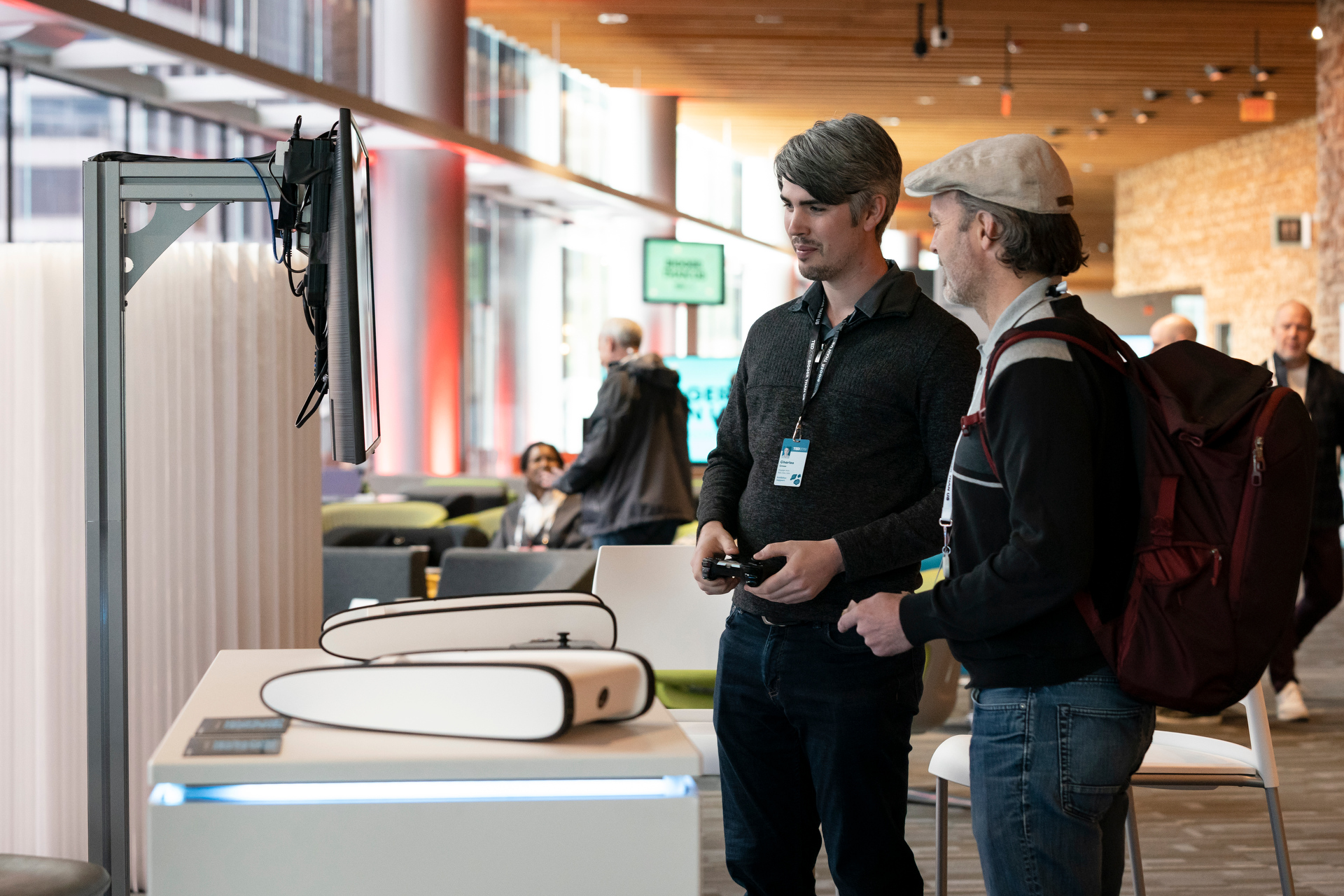https://blog.ted.com/anyone-can-be-an-underwater-expolorer-trident-underwater-drone-at-ted2019/
- |
It’s a foggy day in Vancouver — dense, white clouds hang over the North Shore Mountains, just barely visible through the high glass walls of Vancouver Convention Center. A light rain falls. But in Oahu, Hawaii, it’s sunny, bright and clear. The connection? At TED2019, the Trident underwater drone patrols the water in Oahu, and attendees are at the wheel.
Created by TED Fellow and maker David Lang (watch the 2013 TED Talk where he shared the kernel of this idea), the Trident offers what used to be reserved only for those with access to multimillion-dollar submersibles: the ability to capture one-of-a-kind underwater videos, anywhere in the world.
“Our mission is to democratize the ocean and make it more accessible,” Lang says. “We’re at TED to show the progress we’ve made — and what’s becoming possible.”
Through the Science Exploration Education (S.E.E.) initiative, anyone can get their hands on one of the drones, empowering citizen scientists, educators, nonprofits, researchers and students to monitor and protect marine environments. Apply for one through National Geographic’s Open Explorer program.

Charles Cross pilots a Trident underwater drone in real-time, giving one attendee a glimpse at underwater worlds in Monterey Bay, Indonesia and Oahu, Hawaii. (Photo: Dian Lofton / TED)
Controlling the Trident drone feels a lot like playing a video game — if the video game was live, underwater and happening thousands of miles away.
The 1080p feed from the drones projected onscreen creates the experience of swimming through the water. Connected by a tether to a boat where an operator waits, the Trident is powered by two propellers and swims like a fish, diving down to depths of up to 100 meters, with up to three hours of dive time and a top speed of two meters per second.
Throughout the week, attendees used Tridents throughout the world to explore kelp fields in Monterey Bay, meet reef fish in Indonesia and even glimpse a sea turtle in Oahu. Beyond the transportive ideas shared on stage, it’s spaces like these that make TED special.
